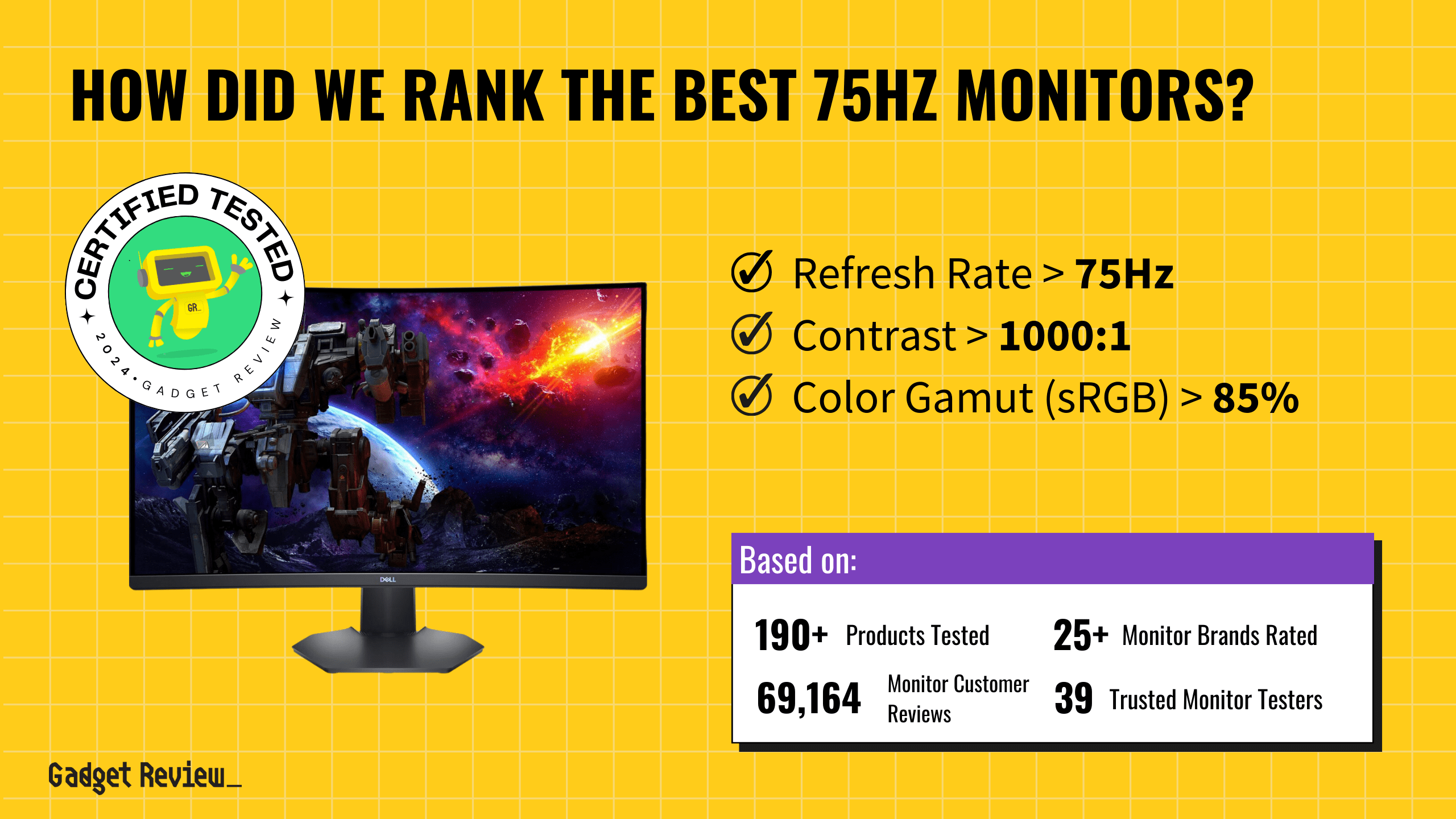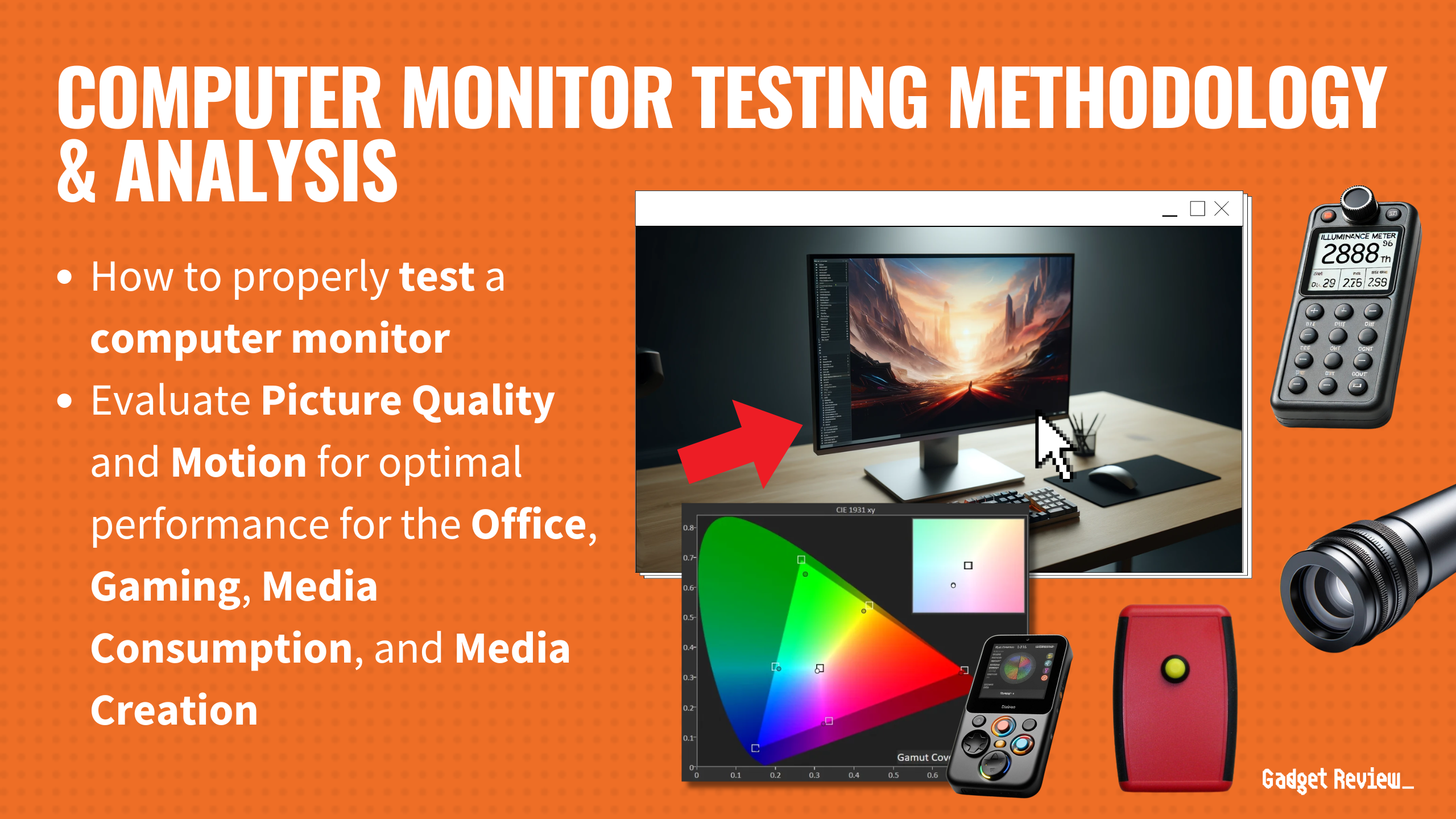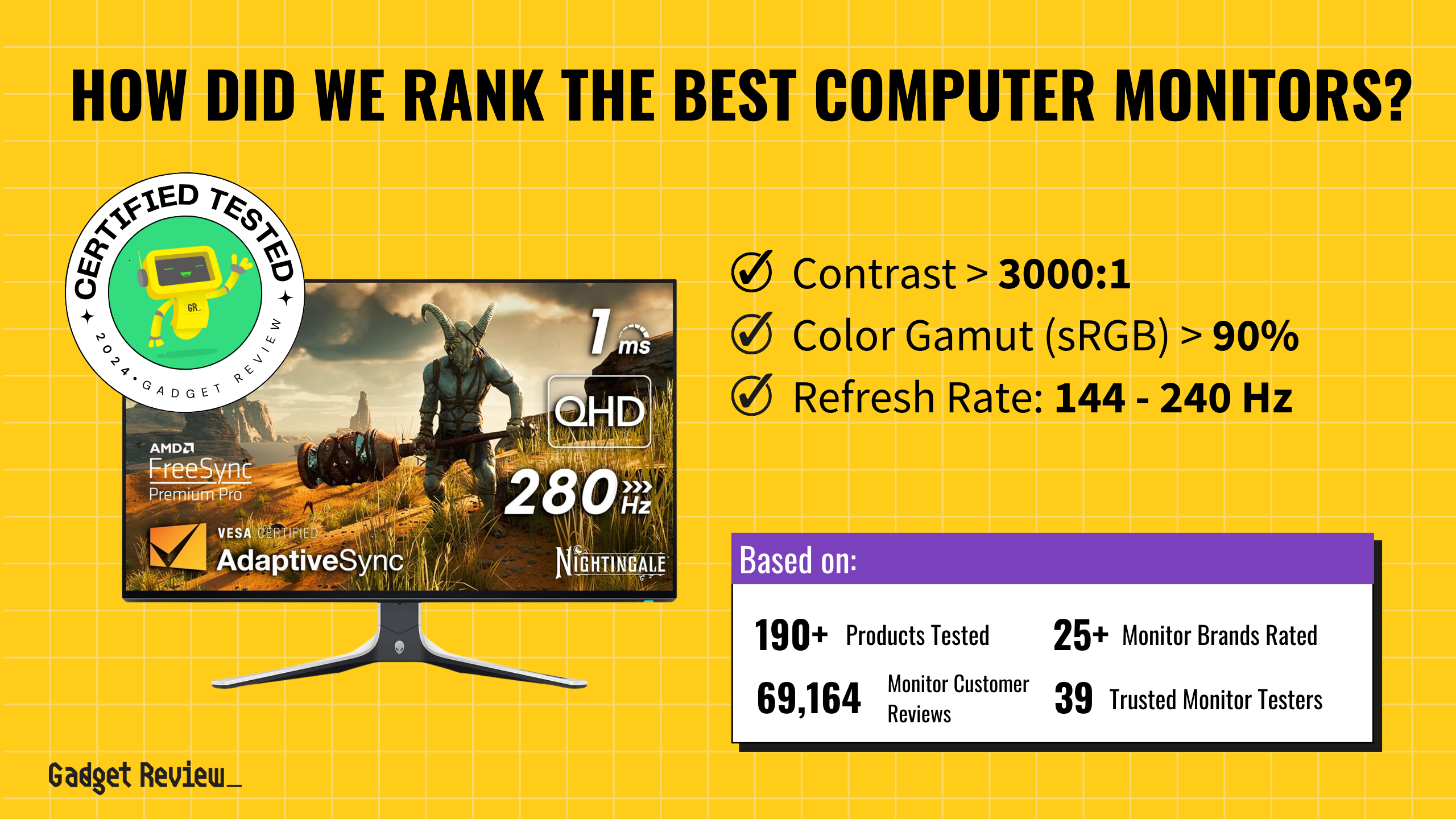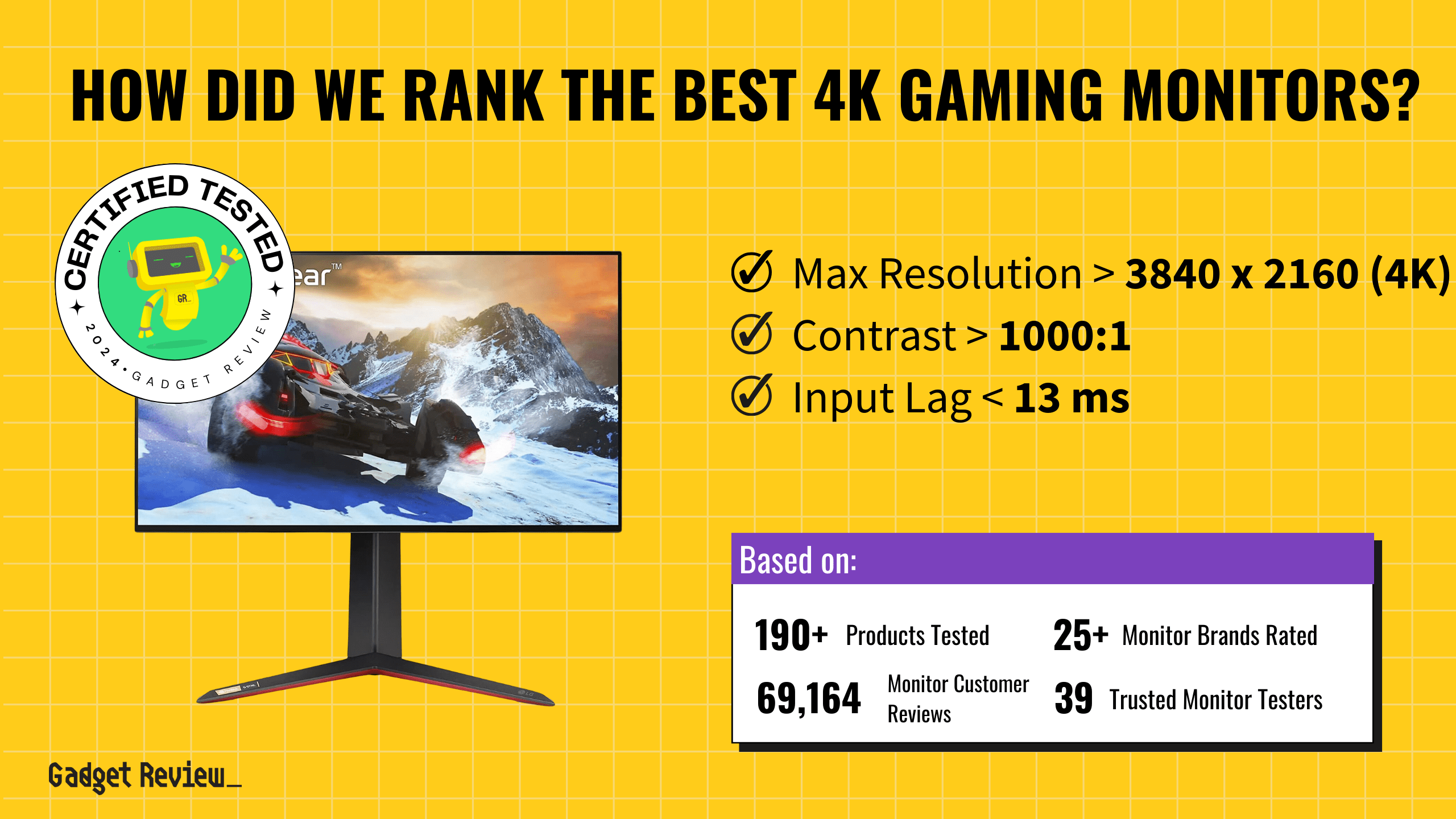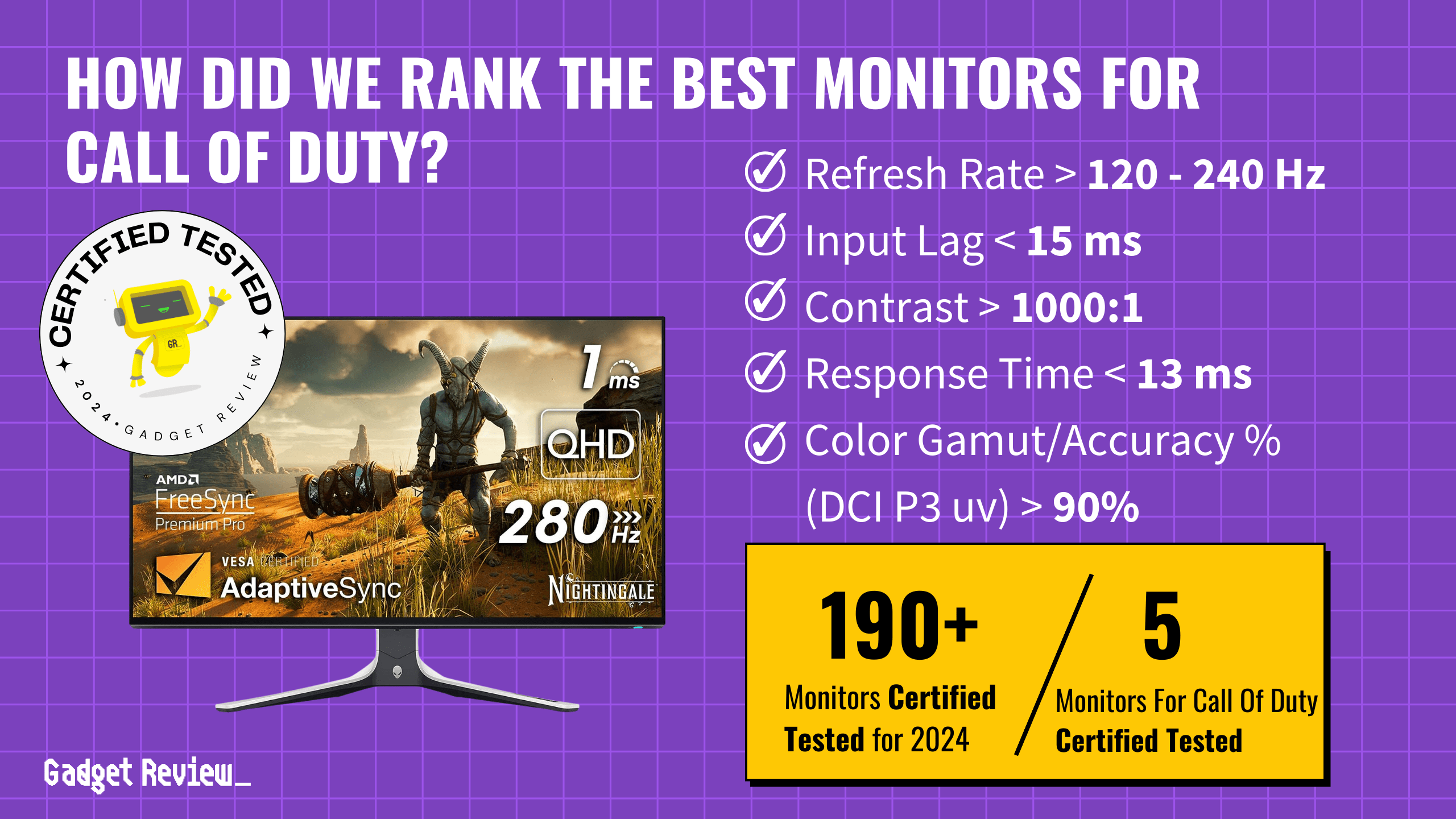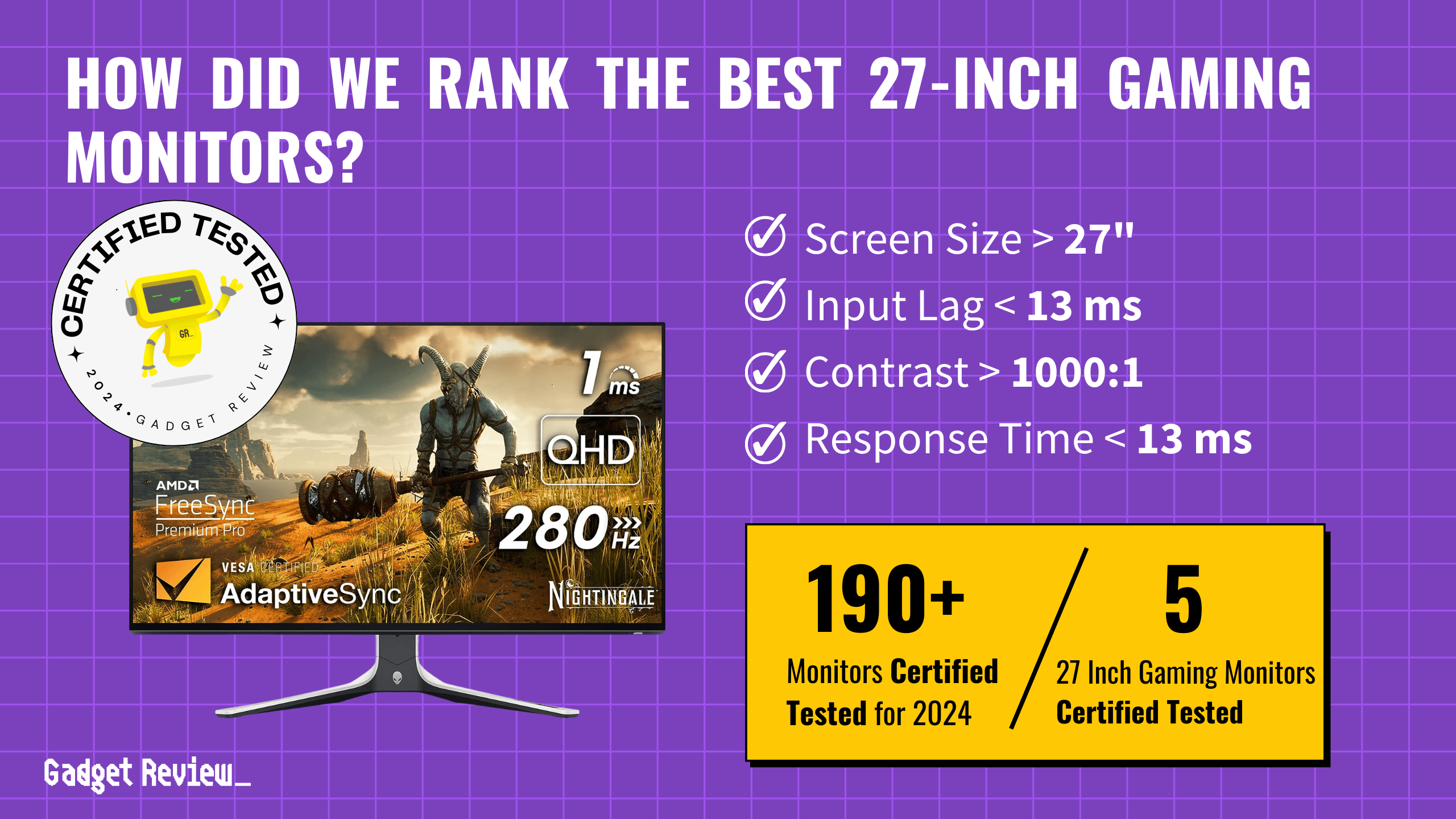When you’re looking for the best 75Hz monitors, it’s important to prioritize features like image quality, ergonomics, and connectivity options. A monitor’s refresh rate of 75Hz provides a smoother experience than the standard 60Hz, which can reduce motion blur and eye strain during extended use. Excellent color accuracy and contrast ratios ensure vibrant and dynamic visuals, making these monitors suitable for both productivity and entertainment.
We analyzed 196 monitors and certified 5 as top picks. Our process included scrutinizing 320,309 reviews and filtering out 71% of experts who produced fake oe low quality reviews. We combine True Score with our proprietary Trust Score to certify products as tested. The winning monitors excelled in our verification process, ensuring a superior user experience. For a faster refresh rate, explore the differences between 144 Hz and 75 Hz to see which suits your needs better. For higher performance, review our guide on the top 144 Hz monitors. Alternatively, our selection of the best computer monitors includes models with various refresh rates suitable for diverse applications and use cases.
How Did We Rank the Best 75 Hz Monitors?
To determine the best 75 Hz monitors, we conducted an extensive review of over 200 websites, considering expert and customer reviews alongside various testing methodologies. Our True Score system helped us identify 2 essential test results and 1 critical specifications. This meticulous process guarantees that our buying guide provides precise and trustworthy recommendations, making it easier for you to choose the ideal monitor.
Our commitment to unbiased reviews is powered by our ‘True Score’ system, targeting low quality and fake reviews. When you shop through our links, you’re backing our mission. Dive deeper to see how.
Minimum Specifications
- Must have a refresh rate of at least 75 Hz
Test Criteria
- Contrast Ratio: 2000:1 or higher (infinite), offering deep blacks and bright whites for an exceptional viewing experience.
- Color Accuracy: At least 85% of the sRGB color gamut, providing rich and vibrant colors.
Latest Updates
- 04/29/2024: Republished the list to include the best 75 Hz monitors based on our True Score system.s
Top 75 Hz Monitors For 2025
Prices accurate at the time of publishing

Best Overall

Runner Up

Best Value

Best Budget

Best Mid-Range

Premium Pick
Dell S3222DGM
Best For 32-Inch
The Dell S3222DGM is an affordable, high-performance monitor with exceptional brightness, contrast, and color accuracy. It is ideal for productivity and casual gaming and offers great value for any home office setup.
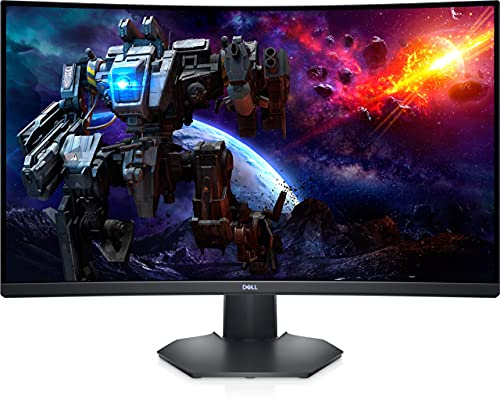
True Score
86833Experts
935kCustomers
Absolutely Fresh
 SAVE $80$329.99$249.99
SAVE $80$329.99$249.99Snapshot
Reasons to Buy
- Exceptional contrast levels
- Good color accuracy
- Fast refresh rate
- Good reflection handling
- Decent peak brightness levels
Reasons to Avoid
- Poor viewing angles
- Limited ergonomics
- No support for HDR content
Specifications
Display Type VA HDMI Inputs 2 HDR Format n/a Max Resolution 2560 x 1440 
Panel Type VA Refresh Rate 165 Hz 
Response Time 2 ms Screen size 32" 
Sync Technology AMD FreeSync All Specs
Test Results
Brightness (nits) 337 Contrast Ratio (as ratio x:1) 4,283 Color Gamut/Accuracy % (DCI P3 xy) 85 Color Gamut/Accuracy % (DCI P3 uv) 0 Color Gamut % (sRGB Coverage xy) 98 Color Gamut % (Adobe RGB Coverage xy) 82 All Retailers
- $249.99$330Save $80
- $279.99$298Save $18
- $319.99$430Save $110
Our Verdict
If you’re looking for a 75 Hz monitor, you’ve noticed that many offer far more than 75 Hz. The Dell S3222DGM’s 165 Hz refresh rate is no exception. With a great brightness of 337.14 nits, it’s perfect for setting up in a bright room or dealing with a lot of ambient light.
It also features a high contrast ratio of 4282.5:1, which ensures deep blacks and bright whites, resulting in crisp and vivid image quality. However, the monitor’s response time of 5ms and input lag of 18.25ms make it squarely productive in use cases. While you can play casual gaming on it, the monitor is much better at handling spreadsheets and general productivity.
The 98.1% sRGB color gamut coverage is fantastic, though, and reinforces the task-focused nature of the S32, with excellent color accuracy that makes it a great choice for web designers.
Overall, the Dell S3222DGM is an exceptional monitor that offers equal parts value and performance. Its high refresh rate, great brightness, and high contrast ratio, combined with a surprising price tag, make it an easy pick if you’re looking for an affordable, do-it-all monitor for your home office.

Best Overall

Runner Up

Best Value

Best Budget

Best Mid-Range

Premium Pick
Corsair Xeneon 27QHD240
Best For Business
The Corsair Xeneon 27QHD240 stands out with its OLED panel, offering deep contrasts and superb color accuracy at a competitive price, making it a compelling choice for professionals and gamers concerned with image quality and response time.
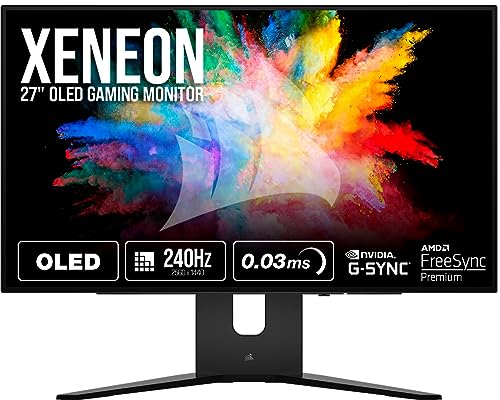
True Score
858410Experts
90336Customers
Absolutely Fresh
 $999.99
$999.99Snapshot
Reasons to Buy
- Excellent OLED Picture Quality
- Ultra-Fast Response Time
- Low Input Lag
- High Refresh Rate and VRR Support
Reasons to Avoid
- Lower Peak Brightness Levels
- Higher Input Lag with Different Refresh Rates
- Potential OLED Burn-In
Specifications

Available Inputs 3.5mm, DisplayPort, HDMI, USB 
Bluelight Filter Yes 
Built-In Speakers No 
Built-In Webcam No 
Curved Screen No Display Type OLED 
Flicker Free Yes HDMI Inputs 2 HDR Format HDR10 High Dynamic Range (HDR) Yes Max Resolution 2560 x 1440 
Panel Type OLED Refresh Rate 240 Hz 
Response Time 0.03 ms 
Rotating Screen Yes Screen size 27" 
Sync Technology AMD FreeSync, G-Sync All Specs
Test Results
Brightness (nits) 318 Contrast Ratio (as ratio, x:1) 9,473 Color Gamut/Accuracy % (DCI P3 xy) 96 Color Gamut/Accuracy % (DCI P3 uv) 0 Color Gamut % (Adobe RGB Coverage xy) 90 Color Gamut % (sRGB Coverage xy) 107 All Retailers
- $999.99
- $1,103.65
Our Verdict
If you want OLED depth and a higher refresh rate, the Corsair Xeneon 27QHD240 offers up not only a blisteringly fast 240 Hz refresh rate but also an exceptional contrast ratio of 9473:1. While the fact it’s an OLED Means that the contrast is theoretically infinite, in practice, the contrast ratio tends to be much smaller on monitors. Even still, the monitor produces exceptional blacks and whites, which pairs great with the 317.53 nits of brightness, allowing the monitor to work great in moderately lit offices.
If crisp and blur-free content matters most to you, the Xeneon also features an unreal response time of 0.79 ms, keeping motion blur completely free from basically anything you can throw at it. If response time matters less and you’d rather have higher brightness and are willing to compromise on contrast, the Dell S3422DWG is brighter, cheaper, and larger—though not an OLED.
The OLED panel also provides excellent color accuracy and viewing angles, making it a great choice for professional creative work. Its sRGB coverage of 106.96% and DCI P3 xy coverage of 96.1% make it an excellent monitor for browsing the web, designing graphics, or even video editing. Plus, with features like a rotating screen, blue light filter, and flicker-free technology, it’s well suited to long hours of use.
The Corsair Xeneon 27QHD240 offers outstanding performance and surprising value. It’s traditionally expensive, but not much more so than other non-OLEDs on our list. Burn-in may still be a concern with OLED panels, but if you want the rich depth of contrast, unbeatable response times, and outstanding color accuracy in a package that can handle any kind of task, it’s worth the price.
Did you know 71% of computer monitor reviewers are untrustworthy?
Our research found only 33 of 110+ computer monitor reviewers as of December 2025 can be trusted. This is why Gadget Review is committed to calculating the most accurate product scores on the web.
To do this, we give every computer monitor review site a Trust Rating, which measures how trustworthy the site and their testing claims are. We then leverage AI & a machine learning model to combine and calculate the Trust Rating with data from experts and consumers to deliver the True Score, the web’s most accurate product quality rating.
 320,309
320,309Monitor Reviews Analyzed

196
Total Products Analyzed

Best Overall

Runner Up

Best Value

Best Budget

Best Mid-Range

Premium Pick
Dell S3422DWG
Best For Dell
Combining low input lag with excellent brightness and contrast, the Dell S3422DWG is a versatile ultrawide monitor that excels in gaming and productivity tasks. It offers a well-rounded option for a multitasking workstation.
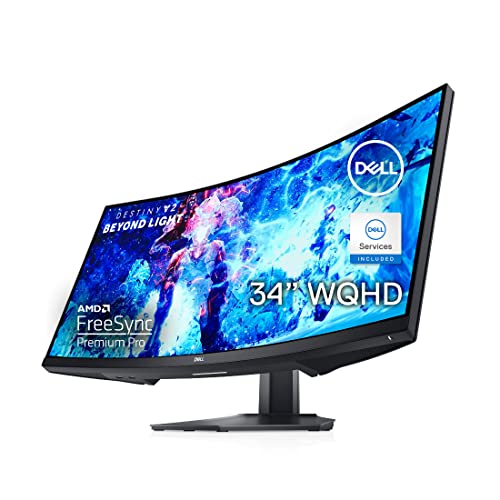
True Score
85824Experts
916kCustomers
Absolutely Fresh
 SAVE $51$399.99$349.00
SAVE $51$399.99$349.00Snapshot
Reasons to Buy
- Outstanding input lag
- Excellent response time at the maximum refresh rate
- Large screen with a crisp resolution
Reasons to Avoid
- Narrow viewing angles
- Some black smearing in dark scenes
- Buggy G-SYNC compatibility at frame rates below 60 fps
Specifications
Display Type VA HDMI Inputs 2 HDR Format Yes Max Resolution 3440 × 1440 
Panel Type VA Refresh Rate 144 Hz 
Response Time 2 ms Screen size 34" 
Sync Technology AMD FreeSync All Specs
Test Results
Brightness (nits) 413 Contrast Ratio (as ratio x:1) 3,008 Color Gamut/Accuracy % (DCI P3 xy) 87 Color Gamut/Accuracy % (DCI P3 uv) 0 Color Gamut % (sRGB Coverage xy) 99 Color Gamut % (Adobe RGB Coverage xy) 83 All Retailers
- $349.00$400Save $51
- $396.74$510Save $113
Our Verdict
If you’re going to use your monitor for productivity as well as gaming, the Dell S3422DWG offers up superb input lag of 4.5ms while still featuring all of the necessary eye-care features you’d want for long hours of spreadsheeting, like blue light filters and flicker-free tech. Running hand in hand with this impressively low input lag is a great response time of 6.9 ms, which helps keep visuals blur-free and crisp when video or games get hectic.
The S34 also has excellent brightness, at 413 nits, which allows it to work in bright offices without much issue. Its contrast ratio is 3008:1, giving it deep blacks and bright whites. If you’re doing graphic design or other creative tasks, the monitor also features 98.5% sRGB color gamut coverage and 87% DCI P3 xy coverage.
The S34’s ultrawide resolution helps improve its effectiveness when multitasking and performing productivity tasks. Thanks to the increased screen real estate, you can array windows and work with multiple windows side by side. This is especially useful if you’re a graphic designer who wants to keep references up while still working on designs and doesn’t want to constantly tab back and forth.
Productivity and flexibility make Dell’s S3422DWG an attractive choice. Its strong contrast ratio, excellent brightness, fantastic color accuracy, and host of eye-care features make it an exceptional choice for your home office. It’s responsive enough to be a great gaming monitor when work is done.

DON’T SEE WHAT YOU’RE LOOKING FOR?
For gaming enthusiasts, the best monitor for Call of Duty should offer high refresh rates and excellent color accuracy. Understanding color standards like sRGB, limited RGB vs. full RGB, and DCI P3 vs. sRGB can significantly impact your visual experience, ensuring vibrant and precise color reproduction crucial for professional graphic design work, immersive gaming experiences, and cinematic content consumption. Additionally, streamers should consider the best monitor for streaming to ensure optimal performance, seamless gameplay capture, and high-quality content delivery to their audience.
Enhancing your gaming setup isn’t just about screens; adding the best RGB strips for PC can create an engaging atmosphere. For those loyal to specific brands, the top Samsung monitors provide a reliable option known for its superior display technology and build quality.

Best Overall

Runner Up

Best Value

Best Budget

Best Mid-Range

Premium Pick
Dell S2722DGM
Best For Cheap
With a balance of high refresh rate, solid brightness, and excellent color accuracy at a budget-friendly price, the Dell S2722DGM is an attractive option for gamers and professionals seeking performance without breaking the bank.
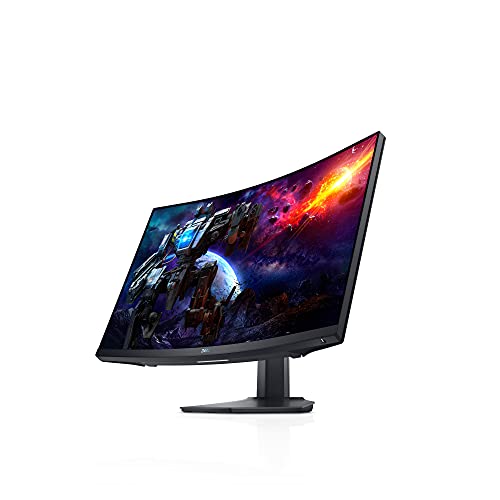
True Score
83803Experts
905kCustomers
Absolutely Fresh
 SAVE $100$299.99$199.99
SAVE $100$299.99$199.99Snapshot
Reasons to Buy
- High refresh rate
- Rapid response time
- Excellent contrast ratio
- Impressive peak brightness
- Decent reflection handling
Reasons to Avoid
- No support for HDR content
- Poor ergonomics
- Narrow viewing angles
Specifications
Display Type LED HDMI Inputs 2 HDR Format n/a Max Resolution 2560 x 1440 
Panel Type VA Refresh Rate 165 Hz 
Response Time 2 ms Screen size 27" 
Sync Technology AMD FreeSync, G-Sync All Specs
Test Results
Brightness (nits) 390 Contrast Ratio (as ratio x:1) 2,948 Color Gamut/Accuracy % (DCI P3 xy) 75 Color Gamut/Accuracy % (DCI P3 uv) 0 Color Gamut % (sRGB Coverage xy) 100 Color Gamut % (Adobe RGB Coverage xy) 80 All Retailers
- $199.99$300Save $100
- $249.99$289Save $39
Our Verdict
If you’re a budget buyer looking for a high refresh rate computer monitor with a good balance between performance and cost, the Dell S2722DGM is worth it. At 390 nits, it’s bright enough to use even in well-lit offices, and its contrast ratio of 2948:1 means it delivers deep blacks and bright whites.
The vivid picture is further supported by an sRGB color gamut coverage of 99.6%, making the monitor fantastic for web browsing, web design, and other productivity tasks that don’t need the broader DCI P3 xy gamut. This is just as well, as the S27 is somewhat weak with this particular gamut, covering only 75% of it, meaning it’s not well suited to HDR and other cinematic content. The included blue light filter and flicker-free tech are welcome, helping to reduce eye staring when working long hours in front of a screen.
This monitor’s impressive 165Hz refresh rate keeps visual tearing to a minimum and pairs well with its response time of 5.2 ms and input lag of 9.2 ms, making the monitor excellent for smooth, responsive gaming with minimal delay from your inputs. Plus, thanks to support for G-Sync and FreeSync, it can use adaptive sync tech no matter your GPU.
Despite its extremely low price tag, the Dell S2722DGM offers surprising performance. If you’re a budget-conscious buyer, you’ll not have to compromise on anything beyond its HDR performance. For an office monitor, it’s unmatched in its blend of performance, eye care features, and price, and as a bonus, it even handles gaming well.
Category Snapshot
Computer Monitors
- Total Brands/Products Tested
27 Brands, 196 Products
- Top 2 Brands
Dell, HP
- Price Range (Budget-Premium)
$100-$1,500
- Average True Score
74.46
- Important Test Criteria
Brightness (cd/m2)
Contrast Ratio (1000:1) - Most Trusted Testers

- Top Monitor Experts
- Typical Warranty
2 years
- Covered by Insurance
Yes – AKKO

Best Overall

Runner Up

Best Value

Best Budget

Best Mid-Range

Premium Pick
Samsung Odyssey Neo G9
Best For Streaming
Boasting an ultrawide screen, stellar brightness, and high refresh rate, the Samsung Odyssey Neo G9 excels in productivity and gaming, albeit with a premium price tag that reflects its top-tier performance and features.
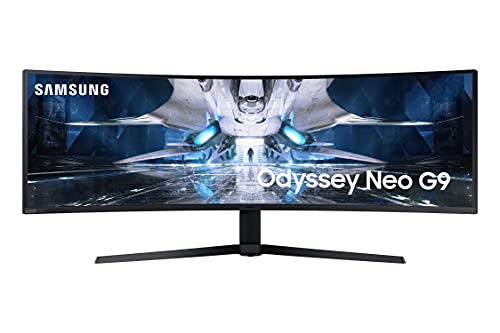
True Score
81814Experts
853kCustomers
Absolutely Fresh
 SAVE $900$2,499.99$1,599.99
SAVE $900$2,499.99$1,599.99Snapshot
Reasons to Buy
- Outstanding 240Hz maximum refresh rate
- Advanced Mini LED local dimming
- HDMI 2.1 inputs
- Excellent color gamut
- Outstanding 5120 x 1440 screen resolution
Reasons to Avoid
- Overly aggressive screen curvature
- Narrow viewing angles
- Variable refresh rate (VRR) issues at 60Hz
Specifications

Curved Screen Yes Display Type VA HDMI Inputs 2 HDR Format Yes Max Resolution 5120 x 1440 
Panel Type VA Refresh Rate 240 Hz 
Response Time 1 ms Screen size 49" 
Sync Technology AMD FreeSync All Specs
Test Results
Brightness (nits) 628 Contrast Ratio (as ratio, x:1) 4,692 Color Gamut/Accuracy % (DCI P3 xy) 91 Color Gamut/Accuracy % (DCI P3 uv) 0 Color Gamut % (Adobe RGB Coverage xy) 86 Color Gamut % (sRGB Coverage xy) 100 All Retailers
- $1,599.99$2,500Save $900
- $1,599.99$2,500Save $900
- $1,689.99$3,033Save $1,343
- $2,199.99
Our Verdict
If you need a 75 Hz monitor that offers a truly absurd ultrawide experience for productivity or for streaming your favorite movies, the Samsung Odyssey Neo G9 is not only a 49” monitor, it also boasts a 240 Hz refresh rate. With its unmatched brightness of 628.33 nits, it’ll work beautifully in any kind of lighting, no matter how bright your office gets.
The monitor’s contrast ratio of 4692.33:1 and a color gamut coverage of 99.6% sRGB deliver outstanding image quality with deep blacks and vibrant colors across any kind of content you can find on the web, and is especially welcome if you’re a graphic designer. If clear and blur-free content is crucial for your work, the rapid response time of 2.7ms coupled with an input lag of only 8.9ms makes it a superb choice and is good enough to make the G9 an outstanding option for gaming.
The monitor’s extreme width allows you to array multiple windows side by side, making it excellent for spreadsheets, design work, and other productivity applications. This huge width combines the 99.6% sRGB and 91% DCI P3 xy color gamut coverage. The former gamut is great for web design, browsing, and most web media, while the latter is fantastic for streaming movies, especially in HDR. If this isn’t enough coverage for your graphic or photo design needs, Corsair’s Xeneon offers a wider gamut for both, but it’s also almost half the size.
What holds the Neo G9 back is the eye-watering price tag. If you’ve got the money to afford the ultra-premium price of the monitor, it will deliver unbeatable brightness, magnificent contrast, excellent color gamut, and fantastic responsiveness in a truly ultrawide package that handles productivity and gaming without breaking a sweat, but it might break the bank.
Which Criteria Matters for Testing Best 75 Hz Monitors?
By focusing on these criteria (2 required), anyone can quickly and easily compare these computer monitors and how they’ll perform. This helps you make an informed decision and purchase the best 75 Hz monitor!
| CRITERIA | RANGE | REQUIRED | DEFINITION |
|---|---|---|---|
| Contrast Ratio | >2000:1 | Yes | The difference in brightness between the whites (lit sections) and blacks (dim or unlit sections) of a monitor panel. |
| Color Gamut % (sRGB Coverage xy) | > 85% | Yes | How much of the sRGB color gamut is covered by the monitor, which helps indicate color accuracy for web content and games. |
Our Trusted Data Sources
We looked at 110+ computer monitor reviewers and found that 33 are trustworthy (60%+ Trust Rating). The three we have listed below are our most trusted for computer monitors.
- Samuel Breton – Rtings, MuckRack
- Chris Eberle – Tom’s Hardware, LinkedIn
- Tony Hoffman – PC Mag, MuckRack
Interested in a comprehensive analysis of our data sources? We’ve got you covered. Below, you’ll find a detailed list of every computer monitor review website we’ve identified, organized by their respective Trust Ratings from highest to lowest. But we didn’t stop there. We’ve meticulously reviewed each publication and verified the data by checking whether the authors have bio links to MuckRack or LinkedIn. We’re committed to not only checking the facts but ensuring their veracity.
Computer Monitor Test Data & Results
1. Contrast Ratio (as ratio, x:1) Test Results
Contrast Ratio
> 2000:1
Acceptable range of performance
Definition: How bright the monitor will get, usually under specific testing conditions, like 10% windows (which means 10% of the screen is a white box.)
Units of Measurement: Ratio
Tools to Measure: Luminance meter or photometer or colorimeter
Why It’s Important:
Contrast ratio is how dynamic images are given detail and dramatic effect, with very dark areas appearing truly dark, while bright areas are bright and pop.
Contrast ratio is responsible for making images appear “dynamic” and “dramatic.” By having a good contrast ratio, a monitor is able to recreate dramatic differences between light and dark spots in scenes, images and games accurately.
At a minimum, we recommend a contrast ratio of 2000:1, as this will do a good enough job at allow for detail in dark scenes and images. If contrast ratio gets too low, the picture quality suffers, and the monitor performs worse across the board, no matter the lighting condition. By getting a monitor with a sufficiently high contrast ratio, you can ensure the picture quality doesn’t suffer, and dramatic scenes with stark shifts in lighting, whether they be in games or videos, are created as accurately as possible.
Contrast Ratio (higher is better)
2. Color Gamut % (sRGB Coverage xY) Test Results
Color Gamut % (sRGB Coverage xy)
> 85%
Acceptable range of performance
Definition: The amount of the sRGB gamut that the monitor covers.
Units of Measurement: %
Tools to Measure: Colorimeter
Why It’s Important:
The sRGB color gamut is the most commonly used gamut for most colors when browsing the web, watching videos on the web on sites like YouTube, and when playing video games.
Since color gamut comes in a variety of different types, there’s bound to be some confusion as to which is meant for what. sRGB is an extremely common gamut that is used for the vast majority of web content, including how YouTube videos display, and is the primary gamut used for video games.
If you’re looking for accurate colors while web browsing, watching videos or playing games, you’re going to want a coverage of at least 90%. Higher is always better and hitting 100% means that if you correctly calibrate your monitor, you should be seeing content exactly as it was intended. Higher than 100% means that more than just the standard gamut has been covered, which can create more saturated and vivid colors. Coming in under 100% means the colors are less accurate, though this doesn’t become a major issue until you start to fall under 90%.
Color Gamut SRGB (in %; higher is better)
Best 75 Hz Monitors: Mistakes To Avoid
- Ignoring your specific needs: Consider how you’ll be using the monitor. Are you primarily gaming, working, or consuming multimedia content? Different tasks may require different features, such as high refresh rates for top gaming monitors or color accuracy for graphic design.
- Not checking compatibility: Ensure the monitor is compatible with your existing setup. Check the connectivity options (e.g., HDMI, DisplayPort) to ensure they match your devices. Also, verify compatibility with your graphics card and operating system.
- Overlooking panel type: Different panel types—such as IPS, TN, and VA—offer varying characteristics in terms of color accuracy, viewing angles, and response times. IPS panels generally provide the best color reproduction and wide viewing angles, making them suitable for tasks like content creation and photo editing. TN panels offer faster response times, which may be preferred for gaming. Consider your specific needs and preferences when selecting the panel type.
- Neglecting resolution: While refresh rate is important, don’t overlook resolution. Higher resolutions offer sharper images and more screen real estate, which can be beneficial for productivity tasks or multimedia consumption. Consider at least a 1080p (Full HD) resolution for a 75 Hz monitor or higher resolutions such as 2K or 4K if your budget allows.
The Best 75 Hz Monitors Tests Compared
Product |
True Score
|
Brightness
|
Contrast Ratio
|
Color Gamut (DCI P3)
|
Color Gamut (sRGB)
|
Input Lag
|
Response Time (ms)
|
Reflections %
| |
|---|---|---|---|---|---|---|---|---|---|
| 86 |
|
|
|
|
|
|
| $249.99 $330 $80 |
| 85 |
|
|
|
|
|
|
| $999.99 |
| 85 |
|
|
|
|
|
|
| $349.00 $400 $51 |
| 83 |
|
|
|
|
|
|
| $199.99 $300 $100 |
| 81 |
|
|
|
|
|
|
| $1,599.99 $2,500 $900 |


